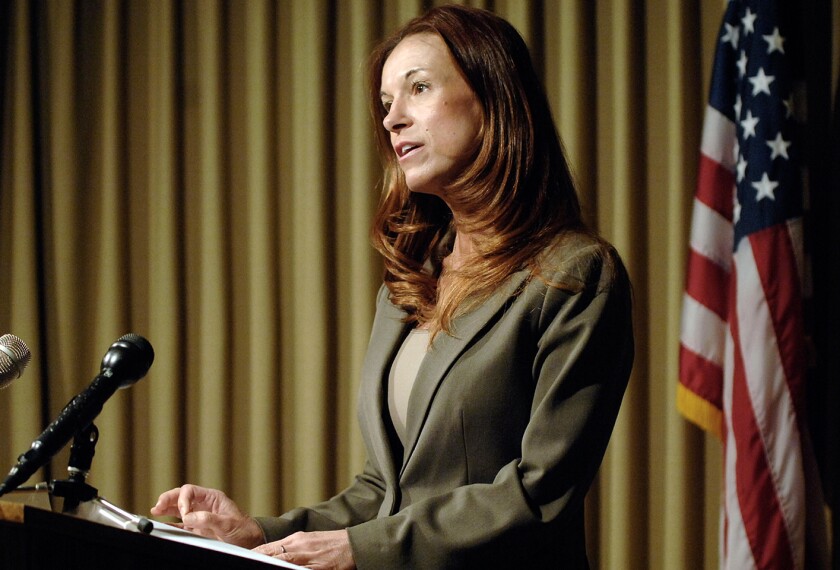More than 1,600 districts, schools, and nonprofits applied for a piece of the $650 million Investing in Innovation Fund by last week’s deadline, even as U.S. Secretary of Education Arne Duncan warned that the vast majority of them will end up losers in their quest for the economic-stimulus grants.
With just $650 million available for the innovation fund, and an estimated 205 awards at most, the “i3” competition will be tight. So Mr. Duncan had a message last week for the 1,669 who officially applied by the May 12 deadline.
“I need you not to scream about the process” and the scoring system, Mr. Duncan told about 600 in attendance at the May 12 NewSchools Venture Fund Annual Summit, many of whom applied for i3. Instead, he said, “I need you to [lobby for] Investing in Innovation Two.” He continued, “We need losers to demand ... the next generation of funding.”
Unlike the Race to the Top Fund competition for states, which had two rounds, i3 is a one-shot deal—at least for now. All the money will be given out in one round by Sept. 30. However, Mr. Duncan is urging Congress to continue i3 as part of his fiscal 2011 budget. (“As Endgame Approaches, Anxieties Rise,” Feb. 10, 2010.)
For the entrepreneurs who gathered at the NewSchools meeting—many of whom have been on the front lines of education innovation for years—the federal government is a new partner in this innovation push.
“Having the federal government at the table investing in innovation has been a missing piece for education reform for a long time,” Ted Mitchell, the chief executive officer of the NewSchools Venture Fund, said in an interview. The San Francisco-based group provides startup money for charter-management groups and other education ventures. Mr. Mitchell pointed to precedent for such an effort, in the federal government’s prominent role in funding health research through the National Institutes of Health.
Now that there’s public money at stake, Mr. Mitchell said there will be more pressure for the entrepreneurial sector to deliver fast, positive results to more students.
“A source of public capital and public accountability for results is also a critical reminder to the entrepreneurial community of who we serve and why,” he said.
Some Risks Seen
Yet as the federal government and education entrepreneurs engage in this new partnership, some see risks.
“Don’t cede education reform to the federal government,” Walter Isaacson, the president and chief executive officer of the Aspen Institute, a nonpartisan Washington educational and policy studies think tank, warned at last week’s gathering. “We have to, in the [non-governmental organization] sector, drive reform.”
The i3 competition is designed to serve as a catalyst for education innovation by providing small, seed-money grants to promising new ideas and to provide more funding to ideas with a proven track record that could be scaled up. The goal of i3, which is open to districts, groups of schools, and nonprofits, is to fund projects that will help close the achievement gap and increase high school and college graduation rates. (“Final ‘i3' Rules Keep Private Match, Evidence Hurdles,” March 17, 2010.)
The grants are divided into three tiers—$5 million, $30 million, and $50 million—with the largest going to applicants that have the most research evidence to back up their proposals. To win an award, applicants must secure a 20 percent matching grant from the private sector or a waiver from the department.
The NewSchools Venture Fund is applying for two validation grants, which are worth up to $30 million each. The first is in partnership with Achievement First (based in Connecticut and New York) and New York City-based Uncommon Schools, both charter-management organizations, and Teacher U, a nonprofit based at Hunter College in New York City, which works to share effective practices with teachers.
The second grant proposal is in partnership with Philadelphia-based Mastery Charter Schools, which took over three low-achieving middle schools in that city in recent years and posted impressive student achievement gains, which have been highlighted by Mr. Duncan as he pushes an aggressive school turnaround agenda. With this proposal, NewSchools wants to work on growing a new generation of school leaders, based on Mastery’s model.
Eligibility Requirements
Although May 12 was the deadline for i3 applications, the number of actual applicants may fluctuate.
First, because of massive flooding last month in Tennessee, the department extended the deadline by one week, to May 19, for districts affected by that severe weather.
Second, submitting an application doesn’t necessarily mean that an entity has been deemed eligible to apply. To be eligible, applicants have to meet minimum thresholds for evidence that are spelled out in the federal regulations for the competition. For example, the largest scale-up grants require strong evidence of a program’s past success, such as an evaluation that used random assignment of students to gauge impact. The department may cut some applicants before the competition really starts.







